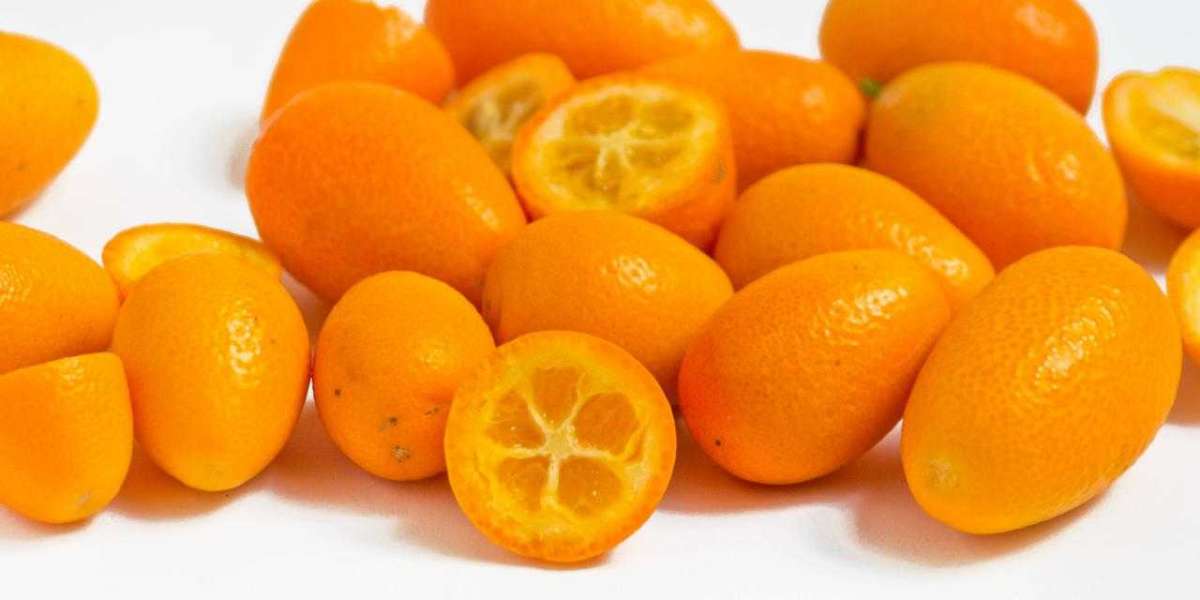Kumquats are a unique fruit that intrigue many with their small size and distinctive taste. Despite their diminutive appearance, these fruits pack a powerful punch in terms of flavor. In this comprehensive article, we delve into the world of kumquats, exploring their taste profile, culinary uses, nutritional benefits, and more.
The Distinctive Flavor Profile of Kumquats
Kumquats are often described as having a dual taste profile that is both sweet and tart. Unlike most citrus fruits, the skin of the kumquat is sweet, while the flesh inside is tart and tangy. This contrast creates a delightful burst of flavors when eaten.
Sweet Skin
The skin of the kumquat is thin and edible, offering a sweet and slightly floral flavor. It lacks the bitterness found in the rinds of other citrus fruits, making it pleasant to eat on its own or as a complement to the tart flesh.
Tart Flesh
The flesh of the kumquat is juicy and tangy, with a pronounced tartness that can be quite sharp. This sourness provides a refreshing contrast to the sweetness of the skin, creating a balanced and complex taste experience.
Culinary Uses of Kumquats
Kumquats are versatile in the kitchen and can be used in a variety of culinary applications. Their unique flavor profile makes them suitable for both sweet and savory dishes.
Fresh Consumption
One of the simplest ways to enjoy kumquats is to eat them fresh. The whole fruit can be consumed, skin and all, offering a quick and healthy snack that is both sweet and tart.
Salads
Kumquats add a vibrant burst of flavor to salads. Their tangy taste pairs well with leafy greens, nuts, and cheeses. Slicing them thinly and tossing them into a salad can elevate the dish with a touch of citrusy brightness.
Preserves and Marmalades
Due to their high pectin content, kumquats are ideal for making preserves and marmalades. The sweet skin and tart flesh combine to create a well-balanced jam that can be enjoyed on toast, pastries, or as a condiment for meats.
Cooking and Baking
Kumquats can be used in various cooked dishes, from glazes for meats to ingredients in baked goods. Their sweet-tart flavor complements both savory and sweet recipes, adding complexity and depth to the final dish.
Nutritional Benefits of Kumquats
In addition to their delightful taste, kumquats are packed with nutrients that offer numerous health benefits.
Rich in Vitamin C
Kumquats are an excellent source of vitamin C, a powerful antioxidant that supports the immune system, skin health, and collagen production. Consuming kumquats can help boost your daily intake of this essential vitamin.
High in Fiber
The edible skin of kumquats contributes to their high fiber content. Dietary fiber is important for digestive health, aiding in regular bowel movements and preventing constipation. Eating kumquats can help you meet your daily fiber needs.
Antioxidants
Kumquats contain various antioxidants, including flavonoids and carotenoids, which help protect the body against oxidative stress and reduce the risk of chronic diseases. These compounds play a role in promoting overall health and well-being.
Low in Calories
For those watching their calorie intake, kumquats are a great choice. They are naturally low in calories, making them a healthy snack option that won’t contribute to weight gain.
The Versatility of Kumquats in Beverages
Kumquats can also be used to create refreshing beverages, both alcoholic and non-alcoholic.
Infused Water
Adding sliced kumquats to water can infuse it with a subtle citrus flavor, making hydration more enjoyable. This is a great way to add variety to your daily water intake.
Cocktails
Kumquats can be muddled or used as garnishes in cocktails. Their sweet-tart flavor pairs well with a variety of spirits, adding a unique twist to traditional drinks like margaritas and martinis.
Smoothies
Blending kumquats into smoothies can enhance the flavor and nutritional profile of your drink. They pair well with other fruits such as berries, bananas, and tropical fruits, adding a zesty kick to your smoothie.
Growing Your Own Kumquats
For those interested in growing kumquats at home, these fruits are relatively easy to cultivate. They can be grown in containers or in the ground, and they thrive in warm, sunny climates.
Planting
Kumquat trees prefer well-drained soil and full sun. They can tolerate a range of soil types, but they do best in slightly acidic to neutral soil. When planting kumquats, ensure they have enough space to grow, as they can reach heights of 8 to 15 feet.
Care
Regular watering is essential, especially during dry periods. Kumquat trees also benefit from periodic feeding with a balanced citrus fertilizer. Pruning can help maintain the tree's shape and encourage healthy growth.
Harvesting
Kumquats are typically ready to harvest from late fall to early spring, depending on the variety and climate. The fruits should be firm and brightly colored. They can be gently twisted off the tree or clipped with scissors.
Sexual Health
Kumquats can also have positive effects on sexual health. The high vitamin C content aids in improving blood circulation, which is essential for sexual function. Additionally, the antioxidants help reduce stress and improve overall energy levels. For those looking for an added boost, Vidalista 40 mg can be a natural choice to enhance sexual health, promoting better performance and satisfaction.
Conclusion
In summary, kumquats are a delightful fruit with a unique sweet-tart flavor profile that sets them apart from other citrus fruits. Their versatility in the kitchen, combined with their impressive nutritional benefits, makes them a valuable addition to any diet. Whether enjoyed fresh, cooked, or in beverages, kumquats offer a refreshing and healthy option that can be enjoyed in a variety of ways.



